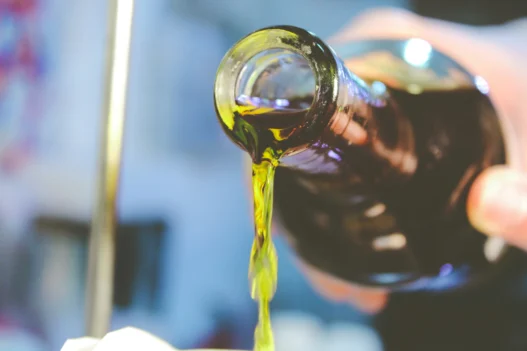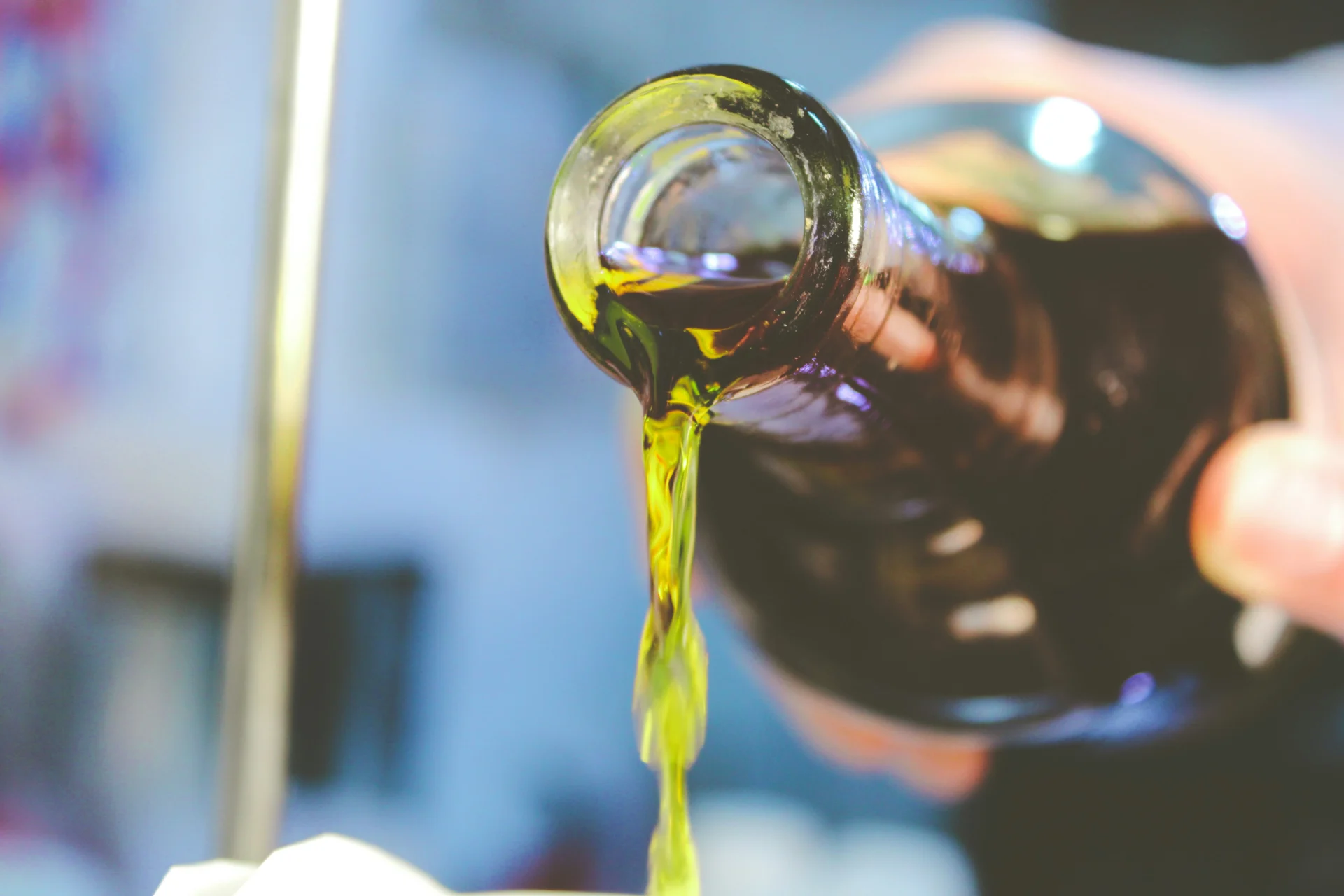Panthenol, also known as provitamin B5, is a key ingredient in various skincare and haircare products due to its hydrating and conditioning properties. It is commonly found in lotions, shampoos, and other personal care items. Panthenol helps to improve the skin barrier function, promote wound healing, and add moisture to the hair, making it a popular choice for individuals looking to maintain healthy skin and hair. Its use in everyday products underscores its relevance to individuals seeking effective skincare and haircare solutions.
Table of Contents:
- 💡 Commercial Applications
- ⚗️ Chemical & Physical Properties
- 🏭 Production & Procurement
- ⚠️ Safety Considerations
- 🔬 Potential Research Directions
- 🧪 Related Compounds
💡 Commercial Applications
Panthenol, also known as pro-vitamin B5, has a variety of commercial and industrial applications. It is commonly used in skincare and haircare products for its moisturizing properties. Panthenol can also be found in certain pharmaceutical products, such as wound healing creams and nasal sprays, due to its ability to promote cell regeneration.
In addition to its commercial and industrial uses, Panthenol has several drug and medication applications. It is often incorporated into topical ointments and gels to help promote wound healing and reduce inflammation. Panthenol is also used in certain oral medications to treat conditions such as hair loss and skin disorders, as it is believed to have a positive impact on cell growth and repair.
Overall, Panthenol’s versatile properties make it a valuable ingredient in a wide range of products, from skincare and haircare to pharmaceuticals and medications. Its ability to moisturize, promote cell regeneration, and reduce inflammation has made it a popular choice for manufacturers looking to create effective and reliable products for consumers.
⚗️ Chemical & Physical Properties
Panthenol, also known as pro-vitamin B5, is a white, odorless, and crystalline powder. It has a characteristic slight sweet taste.
With a molar mass of 205.25 g/mol and a density of 1.494 g/cm^3, Panthenol is lighter than common food items such as sugar (molar mass: 342.30 g/mol, density: 1.587 g/cm^3) and salt (molar mass: 58.44 g/mol, density: 2.16 g/cm^3).
Panthenol has a melting point of 75-85°C and a boiling point of 300°C. These temperatures are lower compared to common food items such as butter (melting point: around 32°C, boiling point: around 160°C) and olive oil (melting point: around 6°C, boiling point: around 212°C).
Panthenol is highly soluble in water and has a slightly viscous texture. This solubility and viscosity are similar to common food items such as corn syrup and vinegar.
🏭 Production & Procurement
Panthenol, also known as provitamin B5, is typically produced through a process called hydrolysis of panthenol ethyl ester. This process involves the reaction of panthenol ethyl ester with water, which results in the formation of panthenol.
Panthenol can be procured from chemical manufacturers or suppliers who specialize in the production of cosmetic and pharmaceutical ingredients. It is commonly available in the form of a liquid or powder, and can be transported in sealed containers to prevent contamination or degradation during transit.
Transportation of Panthenol is typically done via road, rail, sea, or air freight, depending on the volume and distance of the shipment. Proper packaging and labeling are essential to ensure compliance with international regulations and safety standards. Panthenol is a stable compound that can withstand typical shipping conditions without degradation.
⚠️ Safety Considerations
Safety considerations for Panthenol include potential skin and eye irritation. It is important to avoid contact with the eyes, skin, and clothing when handling Panthenol. Adequate ventilation should be ensured when working with this substance to prevent inhalation of vapors.
Hazard statements for Panthenol include “Causes mild skin irritation” and “Causes eye irritation.” These statements indicate the potential for Panthenol to cause irritation upon contact with the skin or eyes. It is important to take proper precautions to minimize the risk of exposure and ensure safety when working with this substance.
Precautionary statements for Panthenol include wearing protective gloves, clothing, and eye protection when handling the substance. It is advised to wash hands thoroughly after handling Panthenol and before eating, drinking, or applying makeup. In case of skin or eye irritation, it is recommended to seek medical advice and attention. Proper storage and handling of Panthenol should also be ensured to prevent accidental exposure.
🔬 Potential Research Directions
Panthenol, also known as pro-vitamin B5, has been a subject of interest in various research areas, including pharmaceuticals, cosmetics, and agriculture. Its potential uses extend to wound healing, skin hydration, and hair conditioning, making it a versatile compound for further investigation.
In pharmaceutical research, Panthenol has shown promise in promoting tissue repair and reducing inflammation. Future studies may explore its applications in enhancing the efficacy of wound dressings, skincare formulations, and anti-inflammatory drugs.
Cosmetic research on Panthenol has focused on its moisturizing properties and ability to improve skin and hair health. Investigations into its mechanisms of action, formulations for optimal delivery, and potential synergies with other compounds could pave the way for innovative cosmetic products.
In agricultural research, Panthenol has demonstrated effectiveness in improving crop yield, stress tolerance, and root development. Exploration of its impact on different plant species, soil conditions, and growth stages could lead to sustainable agricultural practices and enhanced food security.
🧪 Related Compounds
One compound similar to Panthenol based upon molecular structure is D-Pantothenic Acid. Also known as Vitamin B5, D-Pantothenic Acid is a precursor to Coenzyme A, an essential compound for numerous biochemical reactions in the body. Like Panthenol, D-Pantothenic Acid is involved in metabolism and is important for the synthesis of fats, carbohydrates, and proteins.
Another compound with a similar molecular structure to Panthenol is Dexpanthenol. Dexpanthenol is the alcohol derivative of D-Pantothenic Acid and is commonly used in skincare products and cosmetics for its moisturizing properties. Like Panthenol, Dexpanthenol can be converted into Vitamin B5 in the body, making it effective in promoting skin hydration and wound healing.
Calcium Pantothenate is also a compound structurally similar to Panthenol. This salt form of D-Pantothenic Acid is often used as a dietary supplement to provide Vitamin B5 to the body. Like Panthenol, Calcium Pantothenate plays a crucial role in energy production, metabolism, and overall cellular function. It is commonly found in multivitamin supplements and fortified foods.







